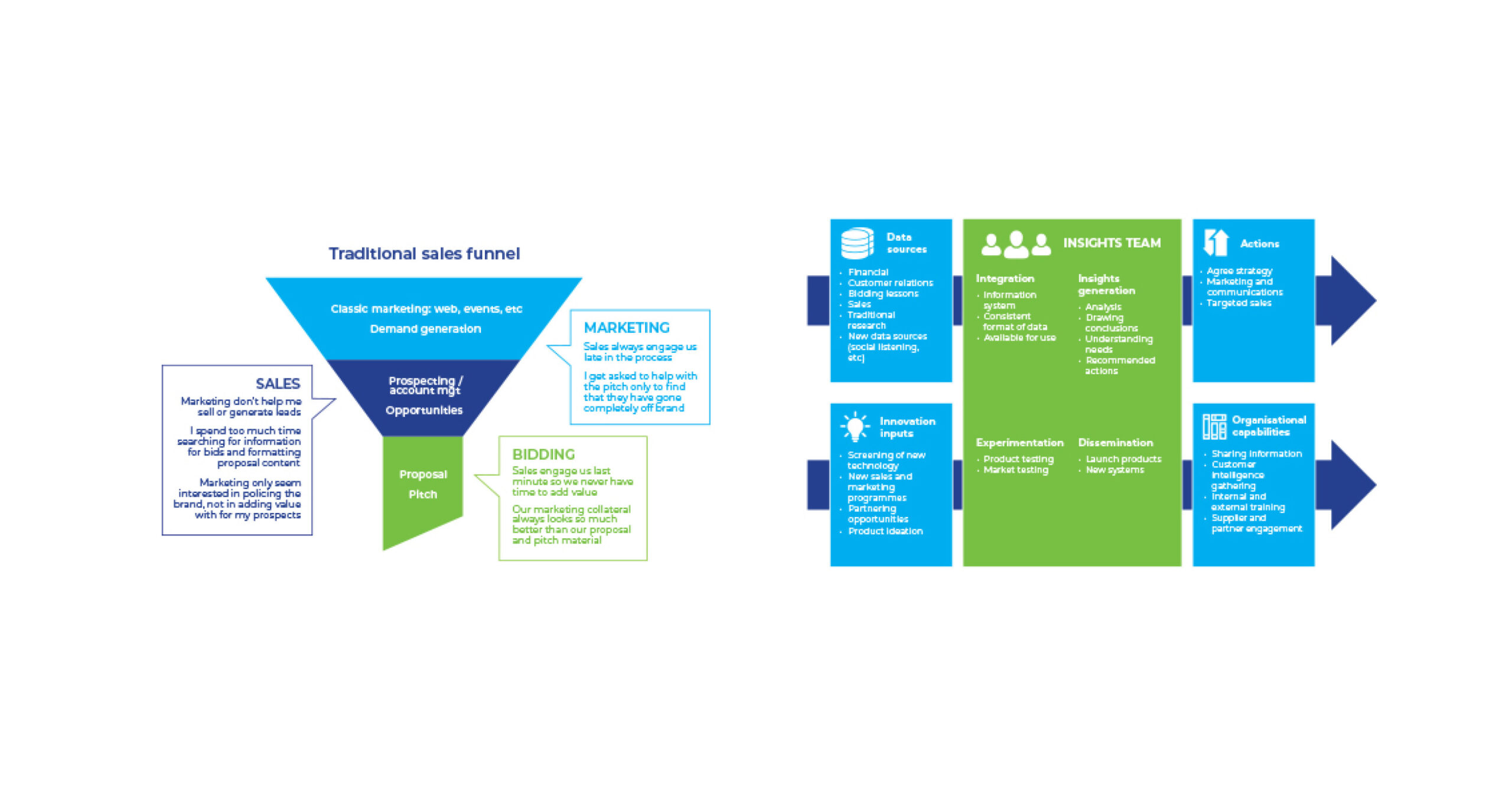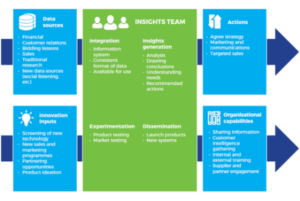
New Ways Of Working
Understanding how new ways of working can help you achieve your bidding utopia
Businesses are becoming more global. Technology is changing at an ever-increasing pace. Ways of working are evolving. Undoubtedly these advancements are going to impact not only bid and proposal teams, but also the sales, marketing and procurement teams that they interact with. Utopia will be making sure we are ready to exploit this. Let’s look at what’s (probably) to come…
Changes for sales and marketing…
All too often sales, marketing and bid functions operate in isolation. This tends to drive the following challenges across the traditional sales funnel:
To avoid these challenges, sales, marketing and bid teams need to understand their roles in winning work and then work together in harmony to do so. The benefits of increased levels of integration are significant. According to a recent Forrester report, companies with aligned teams enjoyed a 38% higher win rate. Bringing sales and marketing closer together makes sense, but there’s also another factor that’s driving organisations to do this…
With nearly ubiquitous information, customers can do much research online. This means that they can go a lot further down the path to making a purchase before they engage with potential suppliers. The traditional sales funnel will be impacted as a result. Opportunities will not now drop in at the top, thanks to marketing efforts, then be processed and delivered by sales and the bid team. They will start to appear at different places in the funnel as the buyer takes more control over the process.
To counter this change, some organisations are driving a more targeted approach to sales and marketing. Advanced and often joint sales and marketing teams are focusing on getting and then retaining the right customers, i.e. deciding which ones they want in the funnel, then pulling them in and controlling the process themselves. To hook new clients means spending more time on research then running targeted campaigns into specific markets and identified clients. To do this efficiently, organisations need gather and process more information – an ‘insights engine’. This will help capture and analyse data from various internal and external sources. The output will not only provide the ingredients for marketing and sales, it will influence organisational strategy and capability development. An example insights engine is shown below.
Adapted from the model from “The Workings of the Insights Engine” by Frank van den Driest, Keith Weed and Stan Sthanunathan
The problem with this model is the sheer depth of data that the insights engine needs to handle. The latest Artificial Intelligence (AI) tools can help do this. AI is being used today in companies like Udacity, where machines monitor thousands of interactions with customers and pick out what happened to get to a successful sale. Based on this data and in real-time, they advise company representatives on what to say to customers to improve their chances of making a sale. The impact: sales effectiveness increased by 54% and Udacity can now serve twice as many customers at a time. With use cases like this, we’ll see more organisations investing in creating their own insights engines and starting to use AI to analyse, guide and even drive their sales and marketing functions.
In this new world, what sales and marketing functions need from their bid function is going to change dramatically. Here’s another reason why…
The way we interact with procurement teams will change…
Formal procurement processes will of course still be required for bespoke and complex solution purchases. But these will happen quicker as buyers use technology to access and analyse potential suppliers automatically – qualifying them in or out without the need for interaction.
More transactional, less complex buying will occur via electronic marketplaces. Imagine being invited straight in to an e-auction with no prior engagement, as your web-based capability statements ticked all your customer’s boxes. Imagine one step further when you receive an order because your (live) published price point also met the budgetary needs of your customer. Sounds a little far-fetched but we know from our latest ‘Bidders view of procurement’ research that the move to more e-procurement tools is rife across all market sectors. This is just the next step.
So, what is the impact on proposal and bid teams?
Bid and proposal teams need to be mindful that these changes will come and react accordingly.
New procurement processes mean that in the short-term someone will still need to own updating corporate data sets (which will just be shared differently). We’re seeing this today in some of those multi-layer on-line questionnaire tools that some organisations are using to qualify existing and potential suppliers. If the bid team is left doing this, in parallel to a reduced number of reactive RFP responses passing through the traditional sales funnel, then teams could be marginalised in to just a ‘facts and figures’ team.
To avoid this happening, bid and proposal teams need to also think about how they can become one of the inputs in to their organisation’s insights engine. For example:
- Gathering intelligence on bidding results and reporting on any patterns
- Providing views on buying trends that the bid team are experiencing
- Capturing any changes in the requirements being sort by prospects
- Assembling insights on what clients are saying they need from existing account and sales teams
Bid teams are typically very close to all this information, so gathering it, reviewing and reporting on it should be possible. Also look at how this data could be stored within existing business tools so that it can be cost-effectively interrogated by others. For example:
▪ Enhancing the capacity of CRM tools
▪ Expanding the remit of the existing proposal Knowledgebase
▪ Creating an Insights SharePoint site
As more scientific approaches are taken by procurement and sales and marketing functions, sales and marketing will need a different type of support on things like sales campaigns, targeted account marketing, renewal and proactive proposals. Proactive proposal teams are starting to recognise this and are starting to diversify their support into these new areas, earlier in the sales process. For example, they are supporting proactive proposal and presentation development activity and are creating bespoke challenger-style insights papers to hook prospects. These activities use the same skills that bid teams should have today but are just using them in a different way.
Understanding the changes that insights engines, AI and Machine Learning will have on organisations is key to the bid or proposal team becoming (or remaining) a strategic function within every organisation. Ensuring it feeds the insights engine and is supporting the new and more proactive behaviour of sales and marketing, will help you reach your own bidding utopia.
REFERENCE
“Marketing Can No Longer Rely on the Funnel” by Mark Bonchek and Cara France
“The New Science of Sales Force Productivity” by Dianne Ledingham, Mark KovacHeidi and Locke Simon
“Building an Insights Engine” by Frank van den Driest, Stan Sthanunathan and Keith Weed
“The Workings of the Insights Engine” by Frank van den Driest, Keith Weed and Stan Sthanunathan
“Bidders view on procurement survey” by Strategic Proposals


